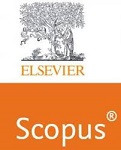Monetizing Financial Data with AI Ethical Considerations and Business Strategies in the Era of Large-Scale Machine Learning
Keywords:
Financial data monetization, AI ethics, algorithmic trading, regulatory compliance, predictive analytics.Abstract
The explosion of financial data created by digital transactions, consumer behavior analytics, and market intelligence has made new doors open for monetization through artificial intelligence (AI) and large-scale machine learning (ML). Fintech companies and banks are increasingly using AI-powered predictive analysis, algorithmic trading, fraud detection, and automated decision-making to drive profitability and fine-tune financial services. But, with the monetization of financial data, comes serious ethical considerations around data privacy, algorithmic bias, regulatory compliance and transparency. So in this paper discuss different business strategies for the use of AI-powered financial data, look at possible dangers of a risk associated with AI decision-making, analyze the effects of the new regulations taking effect, including the GDPR and CCPA. It further introduces strategic frameworks for deploying responsible AI, encompassing ethical AI considerations, XAI 1 and compliance mechanisms to drive sustainable and equitable monetization of financial data. By analysing business models, ethical challenges, and future research avenues, this will elucidate whether financial organisations can cultivate a balance of innovation, profit, and ethical compliance in the emerging AI-as-a-service finance culture.
Downloads
References
X. Zhang, L. Zhang, and Y. Jin, “Deep learning-based financial time series forecasting: A survey,” IEEE Access, vol. 9, pp. 41485-41506, 2021.
H. Li, Q. Wang, and P. Liu, “Transformer-based financial sentiment analysis for stock prediction,” Journal of Financial Data Science, vol. 4, no. 1, pp. 22-35, 2022.
M. Ribeiro, S. Singh, and C. Guestrin, “Why should I trust you? Explaining the predictions of any classifier,” in Proc. 22nd ACM SIGKDD Int. Conf. Knowl. Discov. Data Min., San Francisco, CA, USA, 2016, pp. 1135-1144.
T. Foucault, J. Y. Pagnotta, and M. Roşu, “Quantitative models of high-frequency trading,” Annual Review of Financial Economics, vol. 12, pp. 375-404, 2020.
R. Narang, Inside the Black Box: The Simple Truth About Quantitative Trading, 2nd ed. New York, NY, USA: Wiley, 2021.
M. López de Prado, Advances in Financial Machine Learning, 1st ed. Hoboken, NJ, USA: Wiley, 2019.
European Securities and Markets Authority (ESMA), “Regulatory framework for algorithmic trading,” ESMA Report, 2022.
B. Baesens, V. Van Vlasselaer, and W. Verbeke, Fraud Analytics Using Descriptive, Predictive, and Social Network Techniques, Hoboken, NJ, USA: Wiley, 2018.
J. C. Westland, Financial Fraud Prevention and Detection: Governance and Effective Practices, Springer, 2021.
I. Goodfellow, P. McDaniel, and N. Papernot, “Adversarial examples in machine learning,” IEEE Security & Privacy, vol. 14, no. 3, pp. 18-27, 2017.
B. Mittelstadt, P. Allo, and M. Taddeo, “The ethics of algorithms: Mapping the debate,” Big Data & Society, vol. 6, no. 2, pp. 1-21, 2019.
A. Jobin, M. Ienca, and E. Vayena, “The global landscape of AI ethics guidelines,” Nature Machine Intelligence, vol. 1, no. 9, pp. 389-399, 2020.
A. Abadi, M. Amin, and H. P. Aghdam, “Federated learning in financial services: Opportunities and challenges,” IEEE Transactions on Artificial Intelligence, vol. 3, no. 1, pp. 27-40, 2022.
C. Dwork and A. Roth, “The algorithmic foundations of differential privacy,” Foundations and Trends in Theoretical Computer Science, vol. 9, no. 3-4, pp. 211-407, 2014.
E. Brynjolfsson and A. McAfee, Machine, Platform, Crowd: Harnessing Our Digital Future, New York, NY, USA: W. W. Norton, 2022.
T. H. Davenport and R. Ronanki, “Artificial intelligence for the real world,” Harvard Business Review, vol. 96, no. 1, pp. 108-116, 2021.
P. Varian, “Artificial intelligence and the future of financial markets,” Journal of Finance and Economics, vol. 78, no. 4, pp. 55-73, 2021.
A. Ng, AI Transformation Playbook, Palo Alto, CA, USA: AI Fund, 2022.
J. Pearl and D. Mackenzie, The Book of Why: The New Science of Cause and Effect, New York, NY, USA: Basic Books, 2018.
J. Bostrom, Superintelligence: Paths, Dangers, Strategies, Oxford, UK: Oxford University Press, 2014
Downloads
Published
How to Cite
Issue
Section
License

This work is licensed under a Creative Commons Attribution-ShareAlike 4.0 International License.
All papers should be submitted electronically. All submitted manuscripts must be original work that is not under submission at another journal or under consideration for publication in another form, such as a monograph or chapter of a book. Authors of submitted papers are obligated not to submit their paper for publication elsewhere until an editorial decision is rendered on their submission. Further, authors of accepted papers are prohibited from publishing the results in other publications that appear before the paper is published in the Journal unless they receive approval for doing so from the Editor-In-Chief.
IJISAE open access articles are licensed under a Creative Commons Attribution-ShareAlike 4.0 International License. This license lets the audience to give appropriate credit, provide a link to the license, and indicate if changes were made and if they remix, transform, or build upon the material, they must distribute contributions under the same license as the original.





